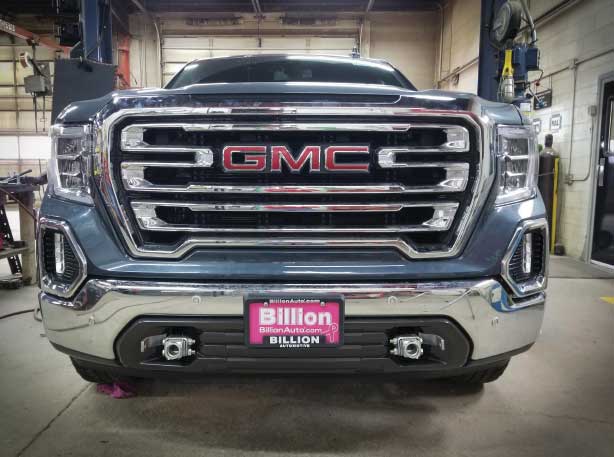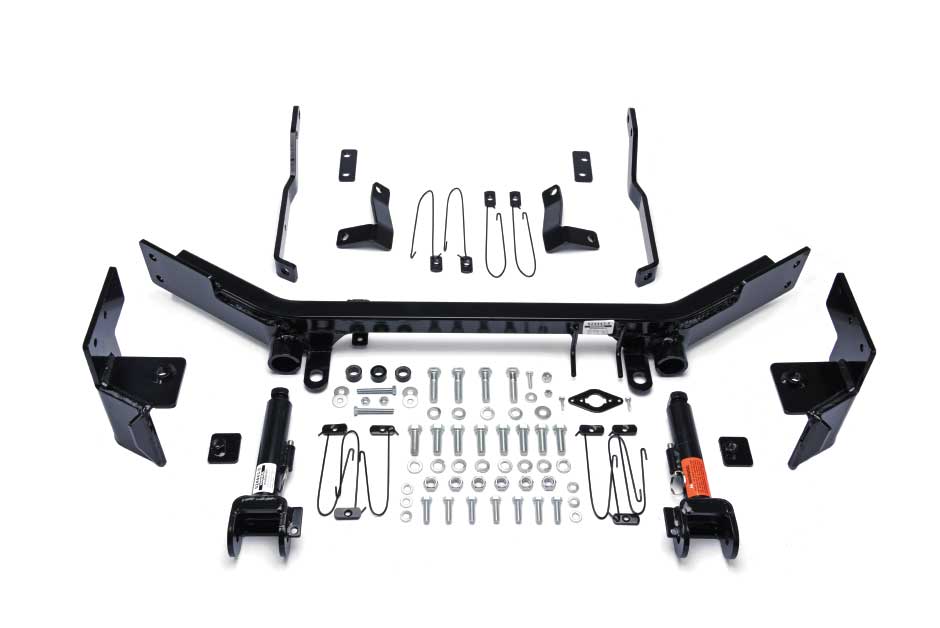
Baseplates are often much more than the sum of their parts, incorporating computer-enhanced engineering, detail and rigorous testing. This Roadmaster baseplate kit (Part No. 524443-5) may look like it’s designed to pull a tank, but it’s actually for the 2015-2018 Ford Focus. Smaller, lighter cars typically require structural support to facilitate safe towing.
Let’s begin at the beginning, shall we?
After you have verified that the vehicle you’re considering can be towed on all four wheels behind a motorhome, the first step to actually towing it will be installing a suitable baseplate. Unlike a trailer, which is designed to be towed using a hitch, the only place a car, truck or SUV was designed originally to be towed was to the repair shop. As such, it must be equipped with some sort of a “coupler” for attaching to the rear of a motorhome. This connection is by means of a tow bar that can only be attached to the dinghy vehicle via a properly engineered baseplate that can handle the weight and road conditions, and ensure safe tracking.
The term “baseplate” is actually a misnomer; it’s not a plate, but a bracket to which a tow bar can be attached on a semi-permanent basis. Baseplates are carefully engineered to distribute the load of towing and braking evenly, and each are application-specific. For this reason, the leading manufacturers of baseplates, Blue Ox, Demco and Roadmaster, offer fit lists for matching baseplates based on the make, model and year of the dinghy vehicle. In addition, all companies also provide installation instructions for their baseplates, so you know what’s involved in the installation — and can determine the aesthetic impact of adding hardware to the front of the vehicle. This is important because not all baseplates install in the same way.
Sources
Blue Ox | 800-228-9289
Demco | 800-543-3626
Roadmaster | 800-669-9690
You’d think that a heavy truck or SUV would require a massive structure to cope with towing loads, while a compact car would need a small, simple bracket. Actually, the opposite may be true; trucks and SUVs tend to have large, heavy frames, while compact cars are made almost entirely of sheet metal. As a result, large vehicles often require a smaller bracket (or brackets) and a straightforward installation, while a compact car frame may need to be reinforced with specifically engineered components and be more complicated to install. Downloading or reading the installation instructions while shopping for a baseplate will give you a clear picture of what’s involved in the installation, and also a better idea of expected labor costs.

Today’s baseplate kits net a clean installation that’s almost invisible, like this Demco baseplate for a GMC pickup.
These days, baseplates and tow-bar brackets are designed to be nearly invisible when not in use. However, they may require certain portions of the grille or fascia to be trimmed, so the overall success of the tow-bar installation is dependent on the installer’s experience.
Finally, remember that a baseplate is not a “set it and forget it” component. Rough roads and the subsequent vibrations can cause bolts and nuts to loosen. That’s why baseplate manufacturers recommend fasteners be inspected on a regular basis for proper torque and to be sure there are no signs of cracks, oblong holes or other signs of potential failure. If you don’t have the experience to do this, have the system inspected by the installer periodically. Baseplate manufacturers can provide inspection/maintenance guidelines.


